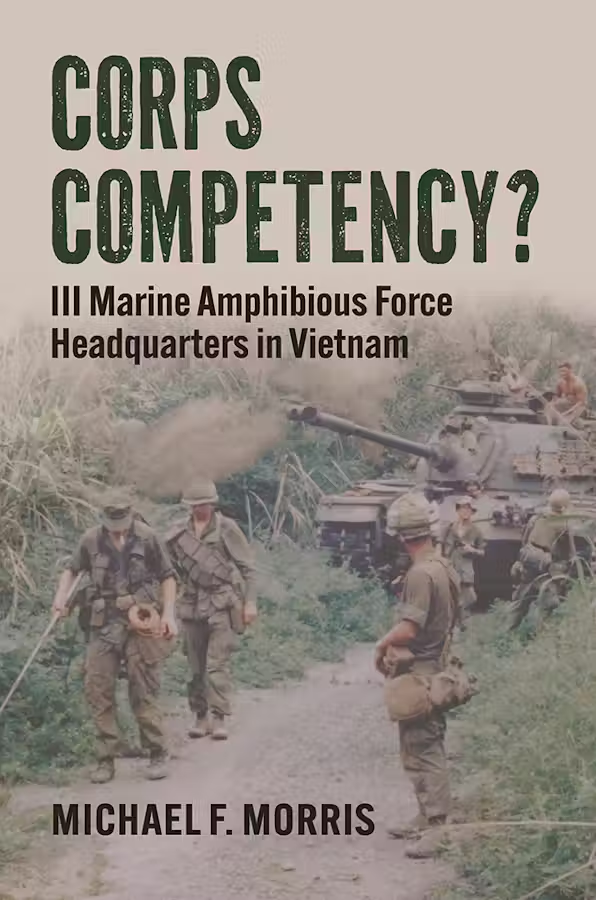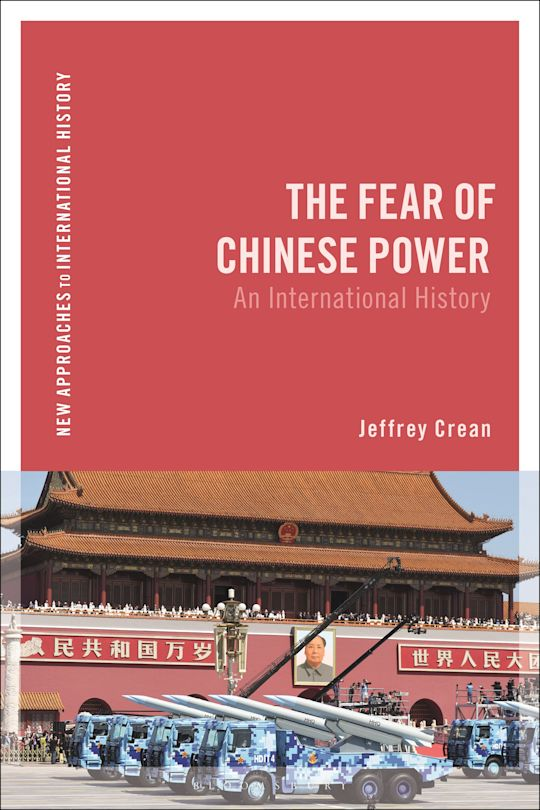

Two PhDs have published their revised dissertations in the prestigious Modern War Series of the University of Kansas Press. In 2024 Kansas published Mike Morris’ Corps Competency? 111 Marine Amphibious Force Headquarters in Vietnam. For a half century historians have wondered how the world’s strongest nation failed to win the war, or in other words, keep South Vietnam from being conquered by North Vietnam. Mike addresses this question by focusing on the Marine headquarters in the conflict’s most dangerous region, I Corps, the northern provinces of South Vietnam that witnessed the bloodiest fighting of the entire conflict. I Corps also contained the Viet Cong’s strongest infrastructure, key portions of the Ho Chi Minh Trail, and the important political cities Hue and Da Nang. The book provides the first analysis of the critical role of the Marine headquarters and tells a story of what can happen when the military leadership is not ready for the conflict it encounters and then fights the war it wants to--rather than the one it is confronting.
This June, Kansas will publish Jonathan Carroll’s Beyond Black Hawk Down: Intervention, Nation-Building, and Insurgency in Somalia, 1992-1995. The 2001 “Black Hawk Down” film popularized the bloody 1992 Battle of Mogadishu. That fight was just one day in a two-and-a-half-year operation in which the United States sought to show the world that it, partnered with the UN, could rebuild a country. That did not happen, for as Carroll demonstrates the intervention was plagued with political infighting, confusion, and fatal assumptions. Jonathan’s book is the history of the entire intervention, from its early and largely successful humanitarian phase in 1992 through to the ultimate withdrawal of UN forces in 1995. Carroll dispels the myths and misunderstandings surrounding the episode and presents an interpretation that includes not only allied, but also the Somali perspective. His analysis and conclusions also foreshadow the U.S. ill-fated interventions in Afghanistan and Iraq.

A third Ph.D. also published his revised dissertation as a book in 2024. Jeffrey Crean (2017) published The Fear of Chinese Power: An International History as part of the Bloomsbury Academic series, “New Approaches to International History.” It offers a welcome intervention into the literature on the U.S.-China relationship from the 1880s to the present day, especially during the Cold War. Recent scholarship has revisited the origins of détente and Nixon’s opening to China, finding its intellectual roots in the mid-1960s. Jeff pushes this genesis yet further back, locating it in the internal debates of Eisenhower- and Kennedy-administration policy-elites, and most interestingly, juxtaposing it with a hardening of American public opinion towards Mao’s China. Jeff deploys this revised timeline to solve the riddle of how these two vectors moving in opposite directions—rising mass-public fears of China alongside rising policy-elite embrace of détente with it—could produce the widely-celebrated 1972 opening to China. The resulting U.S.-China relationship is central to the unfolding international history of the present day.
In two concurrent issues, October 2024 and January 2025, the Journal of Military History published former and current graduate student articles. Brian Donlon’s “Getting ‘On the NATO Map’: Marine Corps Innovation and Late Cold War Exercises, 1975–1978,” examined two North Atlantic Treaty Organization exercises that had a significant impact on the United States Marine Corps of the late Cold War. These maneuvers reversed the service’s previous ineptitude, repaired its reputation in NATO and helped to quiet critics of the corps at the end of the Vietnam war. Furthermore, the exercises stimulated innovation and boosted deterrence, inspiring changes in service training, equipment, and doctrine while also increasing Soviet perceptions of the conventional threat posed to their flanks. This article adds both to the study of peacetime military change and the historiography of the late Cold War—and it won the Adams Center 2023 Cold War Essay Contest. PhD Candidate Tristan Krause’s article, “‘The Dramatic Sequel to the War’: The U.S. Army, the International Tracing Service, and the Search for the Missing, 1945–1950,” examined the relationship between the American Graves Registration Command (AGRC) and the International Tracing Service (ITS) in Europe after World War II. While the AGRC searched for the remains of missing American military personnel and the ITS traced civilian victims of the Third Reich, both regularly uncovered documentary and physical evidence sought by the other agency. These interrelated searches benefited from and, in some cases, depended on each other in a symbiotic endeavor. This study highlights the cooperation between the American military and an allied agency, as well as the blurred lines between civilian and military casualties.
